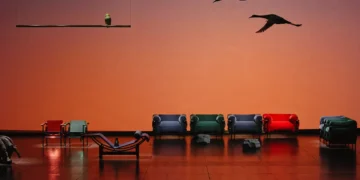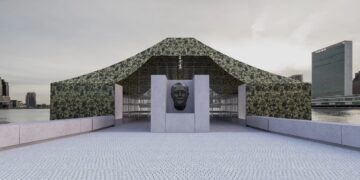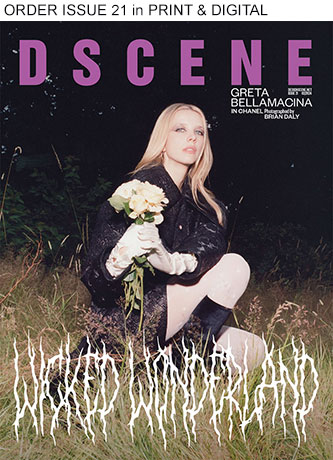
At Milan Design Week 2025, Formafantasma took center stage with Staging Modernity, a theatrical performance and installation celebrating 60 years of Cassina’s collaboration with Le Corbusier, Pierre Jeanneret, and Charlotte Perriand. Hosted at the Teatro Lirico Giorgio Gaber, the project reimagined a key moment in modernist history through a fragmented, immersive experience.
DESIGN
Rather than reconstructing the 1929 Salon d’Automne interior, where the trio first introduced their tubular metal furniture, Formafantasma scattered elements across the theater as if they were sketches. Visitors moved among these fragments, experiencing a space where the original modernist vision appeared cracked open. Animal reproductions populated the installation, challenging the traditional divide between human-made and natural, industrial and organic.

Through this disruption, Formafantasma reframed the notion of the “machine for living,” first proposed by Le Corbusier and his collaborators. Their performance asked how modernity changes when it absorbs not just human needs but the presence of non-human actors and ecosystems. The intervention offered a new, critical way to think about rationality, progress, and the consequences of industrial design ideals.
Alongside the installation, Cassina unveiled limited editions of four of its most iconic pieces: the 1 Fauteuil dossier basculant small armchair, 2 Fauteuil Grand Confort petit modèle, 3 Fauteuil Grand Confort grand modèle, and 4 Chaise longue à réglage continu. Developed with the Le Corbusier Foundation and the heirs of Jeanneret and Perriand, the new editions feature vivid glossy frames in red, blue, and green, matched with ton-sur-ton mohair velvet or self-supporting saddle leather. These pieces will be available for order until September 2026.

Formafantasma’s work at the Teatro Lirico Giorgio Gaber extended beyond visual installation into live performance. Under the direction of Fabio Cherstich, actors moved through the space, activating the pieces and dissolving the traditional boundaries between performer, object, and audience. Texts commissioned from philosopher Emanuele Coccia, architect Andrés Jaque, and artist Feifei Zhou framed the performances, offering new reflections on modernity’s material and ideological implications.
Cherstich envisioned the performance as a chorus that interacted freely with the design objects, challenging their static roles. Bodies adapted to the furniture’s structural limits, redefining its functions and dissolving hierarchies between human, object, and nature. Through these gestures, the installation transformed the theater into a fluid, living ecology, far from the rigid industrial visions of early modernism.
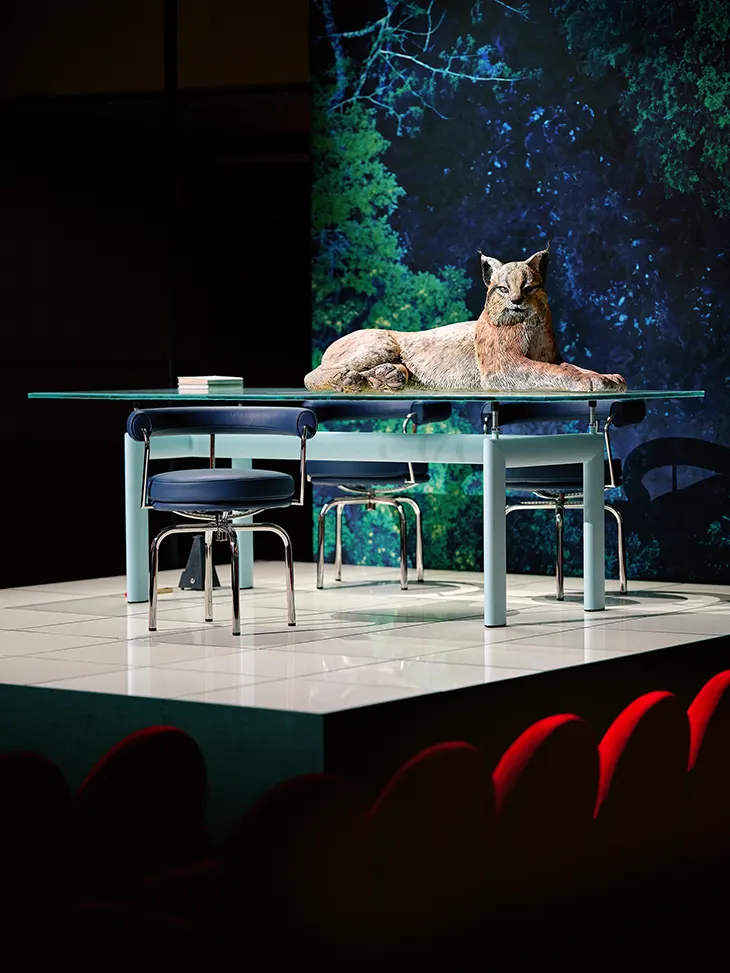
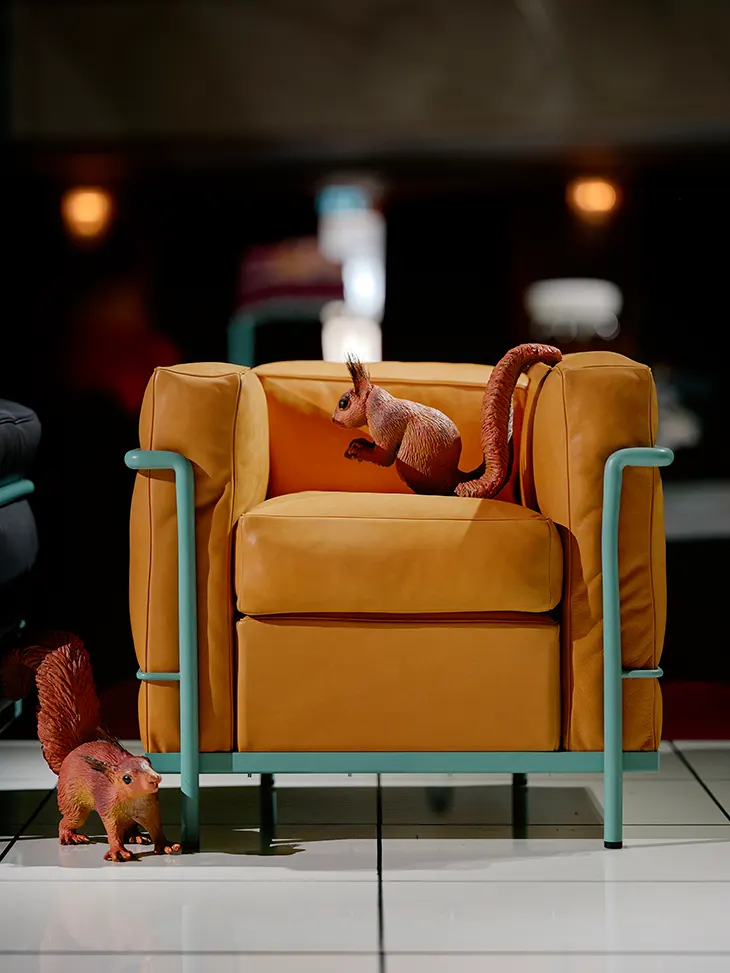
In the foyer, visitors encountered a didactic journey through Cassina’s history with Le Corbusier, Jeanneret, and Perriand. Archival images, videos, and a detailed timeline narrated how Cassina, in 1965, began producing the trio’s designs while they were still alive. Driven by Cesare Cassina’s vision and initiated through connections with entrepreneur Dino Gavina and Heidi Weber, this decision pushed artisanal design into industrial production and helped establish Cassina’s global reputation.
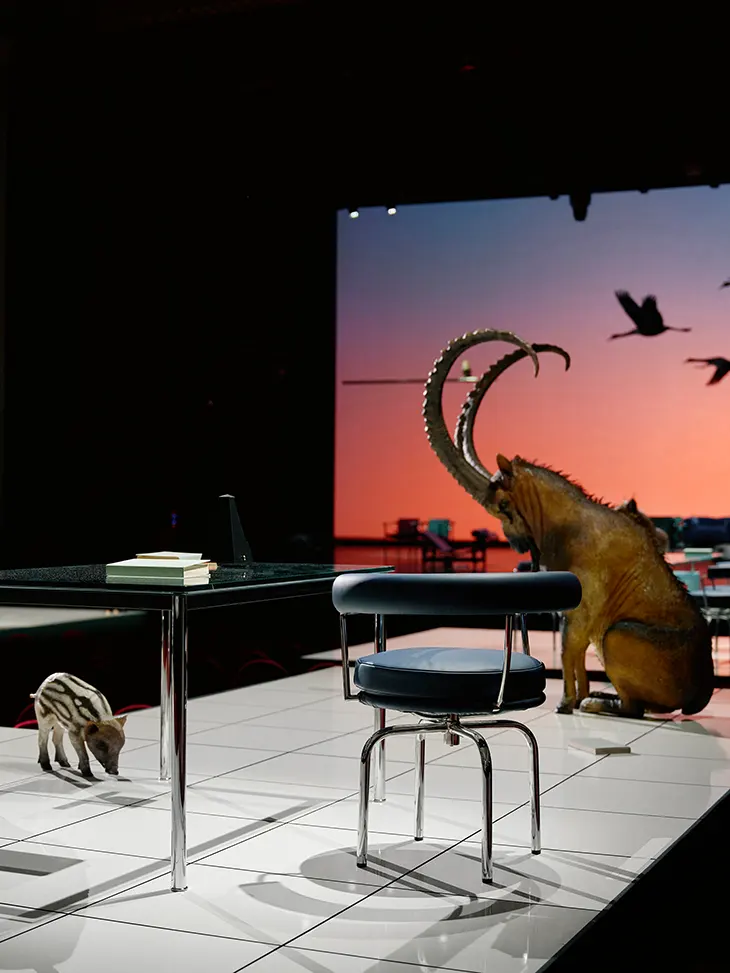
Over the decades, Cassina expanded the collection, introducing technical innovations and sustainable materials while preserving the original vision. The 60th anniversary limited editions, developed with the designers’ heirs and foundations, reflect that ongoing commitment to evolve while respecting the source.
Discover Jil Sander’s Costume Designs for Cassina’s Anniversary Project
Cassina also involved the next generation of creatives. Students from Domus Academy and young artists from local performing arts academies guided visitors through the installation, offering context and interpretations of Staging Modernity’s themes. After Milan Design Week, Cassina plans to donate selected elements, such as the animal reproductions, for educational and cultural initiatives, while preserving others within the Cassina Archives.

